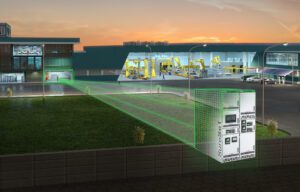In the second half of this interview with Alain Glatigny, Smart Grid Innovation Vice President at Schneider Electric, Alain takes a closer look at how the European Union can smooth the path to smart grid technology. Here’s part 1, if you missed it.
What are the major obstacles to smart grids’ implementation?
The existing regulatory framework is a crucial barrier. Grid flexibility is a great example of this challenge. We need network flexibility to cope with the fluctuations of renewables. This flexibility can be provided on the demand side by commercial, industrial, and residential consumers. Demand side flexibility needs to be recognized as a dispatchable resource to make this happen, which requires regulatory actions.
The EU’s rules must prioritize system flexibility. Distribution system operators (DSOs) must be incentivized to procure flexibility to address local grid constraints. On the other side, consumers have to be allowed to monetize their flexibility. This is only possible if markets can be opened to aggregated demand response and can value flexibility at a fair Price.
What role do smart technologies play in the EU’s Energy Union?
The EU’s Energy Union aims to provide Europe with secure, affordable, and sustainable energy. Smart grid and energy management solutions can support these energy transition efforts.
Smart technologies play an important part in this goal, including allowing for better integration of renewable resources and empowering consumers to act as prosumers. In addition, smart grids, coupled with smart meters, provide consumers and suppliers with information on real-time consumption, which encourages energy users to adapt their energy use. DSOs should be encouraged to make use of smart demand-side flexibility solutions offered by market parties for system operations purposes.
Smart grid technology adoption continues to rise. What do you see as the next step in its development? How will this growth be affected by the EU?
Innovative electrical grid technologies are essential to allow more controllability in MV networks, improve LV network visibility and users’ interactions, and advance data management. They contribute to meeting the EU’s 2030 target of 40-27-27 (40% reduction of greenhouse gases, 27% increase in renewable energy share and 27% improvement in energy efficiency).
There is an urgent need to develop EU rules ensuring DSOs focus more on innovative OPEX solutions (smart grids equals about 15 years of amortization time) rather than in traditional CAPEX investments (putting copper and iron in the ground equals about 30 years of amortization time). This must focus on outputs avoiding stranded costs.
It is important to develop EU rules that motivate DSOs to invest in carrying efficiently and reliably energy from and to the users. Europe needs smart grids now!
For more about smart grids and what the future has in store for utilities, download our free ebook, Powering an Always-on World.



